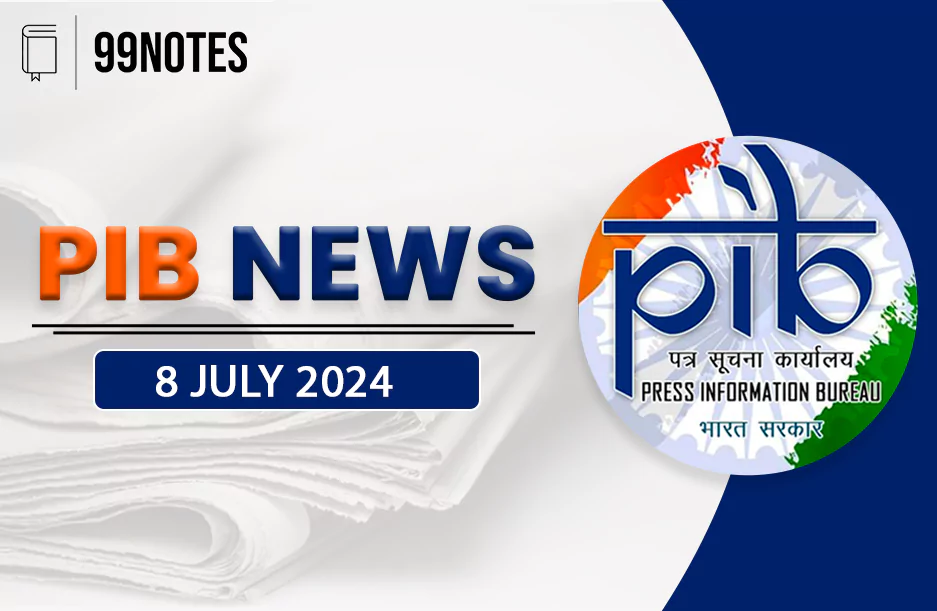8 July 2024 : PIB Summary For UPSC
1. DoT announces Call for Proposals: Quantum Standardization and Testing Labs
(Source – https://pib.gov.in/PressReleseDetail.aspx?PRID=2031358 )
| Topic: GS2 – Governance, GS3 – Science and Technology |
| Context |
|
Analysis of the news:
- The Department of Telecommunications (DoT) has launched a call for proposals titled “Quantum Standardization and Testing Labs.”
- Aimed at accelerating research and development in quantum technologies in India.
- Objective: Establishing benchmarks and protocols for integrating quantum communication elements into telecom networks.
Key Features:
- Labs to set benchmarks and protocols for integrating quantum communication elements into existing networks.
- Develop testing facilities to validate quantum concepts, devices, and applications.
- Ensure accessibility to industry and stakeholders at nominal fees, promoting widespread adoption of quantum technologies.
- Technologies: Testing will cover single photon sources, detectors, quantum memories, communication modules (QKD, quantum teleportation), trusted and untrusted nodes, and more relevant to quantum communication.
- Initiative supports PM’s vision for ‘Jai Anushandhan’, promoting self-reliance and global leadership in quantum technologies.
- Labs to provide easy access to industry stakeholders, startups, and local telecom players.
| Significance of Quantum Technology: |
|
| Practice Question: Discuss the potential applications and strategic advantages of quantum technology development for India. How can India leverage quantum technologies to enhance its economic competitiveness and national security? (150 Words /10 marks) |
2. Increasing Public Awareness on World Zoonoses Day: Not All Animal Diseases Are Zoonotic
(Source – The Hindu, International Edition – Page No. – 4)
| Topic: GS2 – Social Justice – Health |
| Context |
| The Department of Animal Husbandry and Dairying organised an interactive session chaired by the Secretary on World Zoonoses Day, highlighting zoonotic diseases and India’s livestock sector, including recent efforts to control African Swine Fever in Kerala. |
Analysis of the news:
- World Zoonoses Day is marked with an interactive session by the Department of Animal Husbandry and Dairying.
- Zoonoses are diseases like rabies, influenza, Nipah, and COVID-19, transferable between animals and humans.
| Zoonotic diseases: |
|
- Non-zoonotic diseases like Foot & Mouth Disease and PPR affect only animals.
- India has a vast livestock population, major milk and egg producers globally.
- Recent African Swine Fever outbreak in Kerala managed with culling and surveillance.
- Prevention involves vaccination, hygiene, and One Health approach collaboration.
- Department initiatives include Brucella and Rabies vaccination campaigns, and nationwide disease surveillance.
- Awareness is crucial for early detection and control, distinguishing zoonotic from non-zoonotic diseases.
- World Zoonoses Day honours Louis Pasteur’s rabies vaccine breakthrough on July 6, 1885, promoting awareness and preventive measures.




